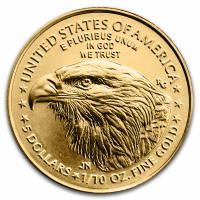Digitizing old computer cassette tapes
 blittled
Posts: 695
blittled
Posts: 695
I have an old fussy Timex Sinclair 1000 and a small collection of tapes and I cannot get the TS1000 to load my tapes. I was wondering if the ADC on the Activity Board could sample the audio output of a cassette player, condition/capture it, then either through a RC filter or the DAC feed it into the audio input of the TS1000? Eventually I would like to do the reverse and capture the saved output so I can read and store files on an SD card rather than on a cassette player. I do have the documentation on the serial protocol/timing of the serial I/O of the TS1000 and I know it would be fairly easy to write PASM to convert the serial I/O.


Comments
http://www.epanorama.net/sff/Computer/Misc/Computer%20Tape%20Conditioner.pdf
Looking at the schematic, it looks like it could be greatly simplified if you just want the RAW output... the 7432 is an OR gate and could be removed, the 74368 is an inverting buffer that could be eliminated, where the inversion could be compensated in the input polarity switch. .... That said you could most likely directly read the audio with the Propeller..... or at the most have a very basic pre-amp just before the Propeller.
My brother was in a similar situation when he switched from cassettes to floppies. He knew what was on most of the cassettes, but the data had faded from just being old and low quality tapes. It was easier to find stuff already out on the net for most of it. He just re-typed the code for most of the rest. The remainder, that ended us getting lost, were just experiments that didn't work anyway.
It think his whole box of tapes ended us on one floppy, and the whole collection of floppies eventually ended up on one CD. Then he lost the CD.
Sounds more like MY brother, losing the CD after all that.
I remember back in the Commodore days I used a regular cassette drive with a few parts on a breadboard to convert the audio to TTL digital and it worked great. Although I don't remember the chip/s
It was a chip like a 7414: HEX Inverter Schmitt Trigger.
Here's what they used on the Commodore systems back then.
http://en.wikipedia.org/wiki/Commodore_Datasette
Inside the tape device the read head signal is fed into an operational amplifier (1) whose output signal is DC-filtered. Op-amp (2) amplifies and feeds an RC-filter. Op-amp (3) amplifies the signal again followed by another DC-filter. Op-amp (4) amplifies the signal into clipping the sine formed signal. The positive and negative rails for all op-amps are wired to +5V DC and GND. The clipped signal therefore fits into the TTL electrical level window of the schmitt trigger step that in turn feeds the digital cassette port.[7]
Thanks for the suggestion Bob that may be the easiest way to digitized the audio. I was thinking of using ADC but a Schmitt Trigger would be easier.
Jeff
My mistake. I thought the signal was like the one in the link Beau posted, a clock pulse followed by the data (pulse for one, no pulse for zero). What you describe is a bit more complex, but it can still be decoded by counting pulses and measuring the time between them, something the propeller excels at.